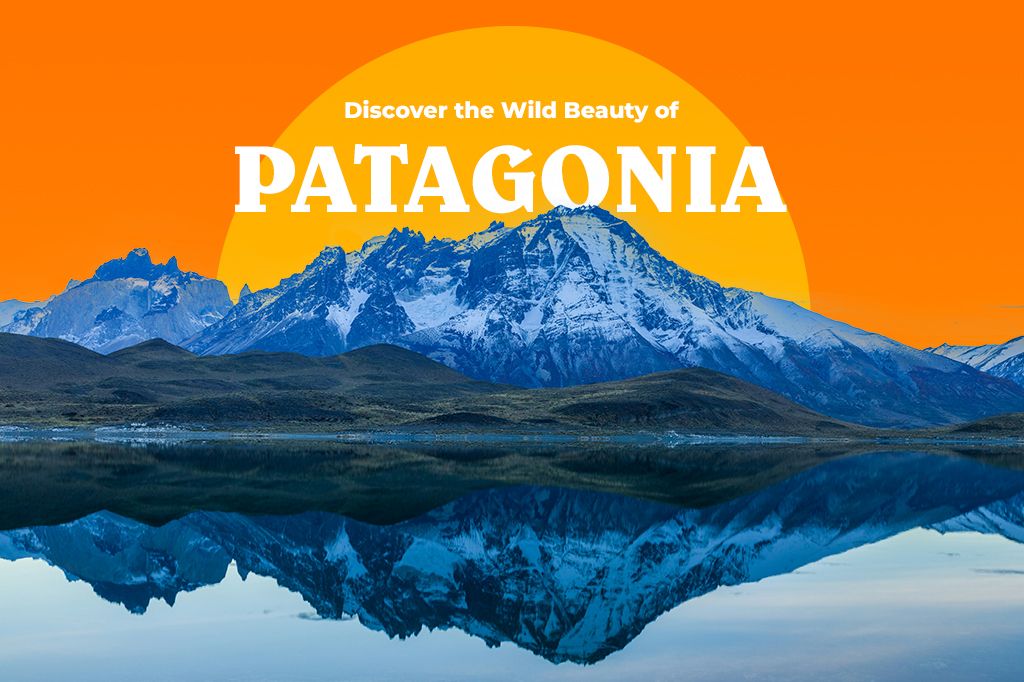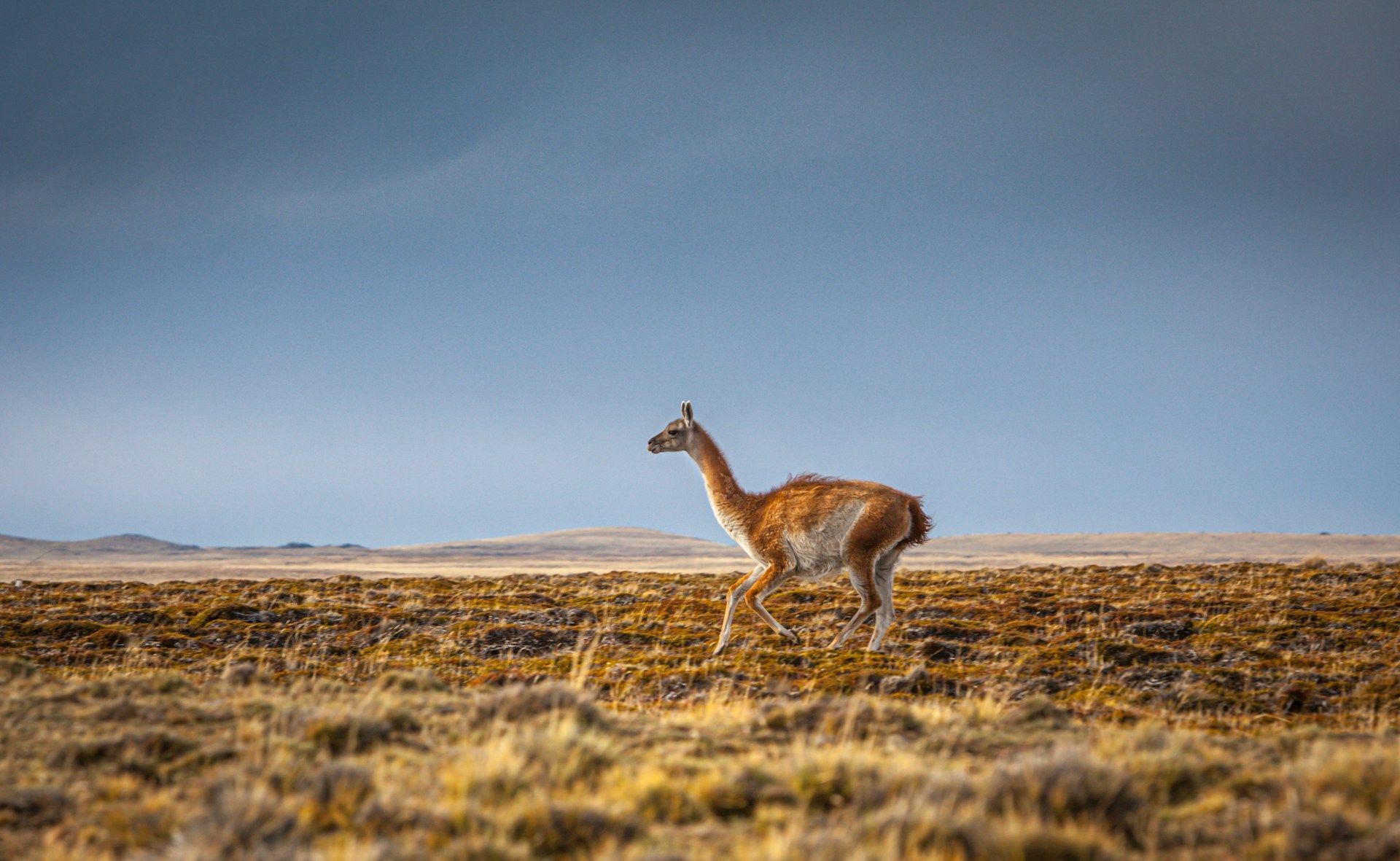Patagonia is the southernmost part of Latin America and includes parts of Argentina and Chile. It’s a unique place to visit, with incredible landscapes and lots of adventurous hikes.
In this article, we’ll take you on a journey through Patagonia’s top attractions, including the iconic Los Glaciares National Park and the remote Cape Horn. Plus, you’ll discover unique wildlife and ecosystems, essential travel tips, and a deep dive into the region’s fascinating cultural history. Ready for the adventure of a lifetime?

Picture by Chris Stenger on Unsplash
Of all the regions you can find in the extense Latin America, none is quite as unique and fascinating as Patagonia. It stetches from Rio Colorado in Argentina and the Biobio River in Chile to the southernmost point of the continent, Cape Horn. From there, only the Drake Passage separates it from Antarctica.
Due to its location, you know it’s going to be cold, and it is. In fact, many people travel there to admire the glaciers and ice fields, and many more to trek the high mountains. It’s a destination ideal for adventurers, for people who love to spend days and even weeks in the outdoors. Camping under the breathtaking stars, seeing the wild fauna, exploring the many parks, and traversing the beautiful yet savage landscapes.
Top Attractions in Patagonia
Los Glaciares National Park, Argentina
Los Glaciares National Park is one of the most visited natural parks in the world. It covers a massive area, over 7,000 square kilometers in total, with many different terrains. One of its main attractions is the Perito Moreno Glacier. If you know a bit about glaciers, you might have already heard of this one. It’s pretty famous since it’s one of the only glaciers in the world that’s not actively retreating. In fact, it is advancing! It’s also pretty active. If you observe it for a while, you’ll see big chunks of ice breaking off and crashing into the waters below.
But that’s not the only attraction, there’s also the Fitz Roy, in Cerro Chalten. It has everything a mountaineer dreams of. It’s high (3,405 m), it’s jagged, it’s dramatic, and its granite peaks are iconic. There are several routes around the park where you can get spectacular views of Fitz Roy. Particularly the trails that lead to Laguna de los Tres and Laguna Capri.

Photo by Hans-Jürgen Weinhardt on Unsplash
The Patagonian Steppe; Argentina and Chile
One of the most recognizable landscapes of Patagonia. It goes all the way from Los Andes to the Atlantic Ocean and is shared between Chile and Argentina. It’s strikingly different from the mountains and glaciers, with vast open plains that seem almost endless, barely any elevation, low shrubs, and lots of wildlife. The terrain there is quite unique, like a mix of desert and grasslands. If you’re looking for somewhere different to stay, you can visit the Estancias and take part in the rural life. There, you can do horseback riding, see sheep shearing demonstrations, and take cultural tours with the gauchos.
There are more than a few interesting places in all those vast plains, like the Cave of Hands. It’s a UNESCO World Heritage Site, and inside you’ll find 9,000-year-old paintings from the original inhabitants of the area. It’s incredible to think of how vastly different their life was, and how, after so long, we can know they existed by their paintings of wildlife and their hand prints.
Cape Horn, Chile
The southernmost tip of Latin America and also the point where the Atlantic meets the Pacific. For its remoteness, it’s commonly known as the “End of the World”, and it’s actually not a part of the continent per se, but part of Horn Island of the Tierra del Fuego Archipelago.
There, you can visit Cape Horn National Park, which is only accessible by boat. You should really bring your camera, so you can keep the vivid memory of the wild landscapes, the incredible visuals of the rugged cliffs, and the dramatic coastline. If you choose to hike there, you’ll have incredible panoramic views of the Ocean at the edge of the world, or you can take a tour all around the island if you wish to see the landscape better. There’s also the Cap Horn Monument, in memoria of all the sailors that navigated the treacherous waters during the Age of Sail.

Photo by Birger Strahl on Unsplash
Wildlife and Ecosystems of Patagonia
If you’re thinking that a region like that could barely sustain any life, then think twice. Patagonia is surprisingly fertile as wildlife goes. And as their terrains and habitats are quite varied, so are the animals you can find there. If you’re looking for unique and endemic species, there’s the guanaco, similar to the llama and pretty common in the steppe. There’s also the Andean condor, one of the largest flying birds in the world; the puma, the top predator in Patagonia; and the magellanic penguin, small penguins found by the hundreds of thousands on the coast of Patagonia.

Photo by Chris Stenger on Unsplash
Although the area is remote and still looks pretty savage, this does not mean that the wildlife isn’t threatened. Humans have been expanding, taking more land for agriculture and livestock, which destroys and fragments the natural habitats. There’s also the menace of climate change, with the rise in temperatures modifying the rainfall patterns, which affects the food supply of many species.
But not everything is bad; there have been many efforts to keep the biodiversity safe. The protection of the population of whales in the Valdes Peninsula, which is a breeding ground, is quite successful. Or the programs to control the invasive species and protect the endemic ones. The establishment of national parks in the area has also contributed to saving other species like the huemul deer.
Adventure Tourism in Patagonia
You already know that Patagonia is an incredible destination for adventurers, but you probably want to know more about all the fun activities that you can do with your friends and family.
Trekking the W Trek in Torres del Paine National Park
If you’re looking for an iconic hiking route, then you have to try the W Trek. But be prepared, this is not a walk in the park. We’re talking about many days en route to cover the 75 kilometers through the heart of Torres del Paine National Park. But as difficult as it is, it’s also so rewarding. Each region you traverse is different from the previous. There’s rugged mountain terrain, forests, and glacial lakes. It’s also a great opportunity to admire the wildlife, since you’ll be out in direct contact with nature for almost a week.

Kayaking in the Fjords of Tierra del Fuego
If you want a different way to explore Tierra del Fuego, you can join a kayak tour! It’s a great way to explore the southernmost waters of the world. With a kayak and a guide, you can access areas that are otherwise almost impossible to reach, and it will take you through many incredible landscapes. There are dramatic fjords, secluded beaches, and sometimes even glaciers. While you paddle along the crystal-clear waters, you can encounter sea lions, penguins, and sometimes whales. If you’re decided, plan it for the summer, as the winds can be chilly and the weather unpredictable in other seasons.
Ice Hiking on Perito Moreno Glacier
If you’re legs and arms aren’t sore from all the previous adventuring, you’re going to love the Perito Moreno Glacier. We already talked about it, but did you know you can hike it? You’ll need a guide, of course, but it’s an experience worth having. Even if it’s hard. It involves strapping on crampons and doing the trip across the glacier’s ice fields, crevasses, and towering ice walls. It is pretty educational also; your guide will explain a lot about the different ice formations and the geological uniqueness of the region, as well as the effects of climate change.
The Cultural History of Patagonia
Indigenous people
Like the rest of Latin America, and as you already saw in the Cave of Hands, the region has been inhabited long before the Europeans. The most well-known indigenous group of Patagonia is the Mapuche. They are hunter-gatherers but practice a bit of farming and raise llamas.
The Tehuelche people were more nomadic, roaming the Patagonian steppe and hunting the wild guanacos and other animals. The Selk’nam, also known as Ona, were nomads like the Tehuelche, and their culture is very rich, full of rituals, mythology, and many ceremonies. They were one of the most affected, and like the Yamana, few of them survive now.
European Exploration
The Europeans reached Patagonia around the 16th century, after the rest of Latin America was already being actively explored and conquered. Ferdinand Magellan was one of the first to navigate the waters and explore them. The name Tierra del Fuego (Land of Fire) comes from the fires he and his crew saw on the shore, and the Strait of Magellan was named after him.
After that, for centuries, the land was left almost forgotten by the world. In 1833, Charles Darwin](https://en.wikipedia.org/wiki/Charles_Darwin) arrived to observe the wildlife and geology, as well as the indigenous cultures. Later that century, the Argentine explorer and scientist Francisco P. Moreno played a key role in the mapping of the area. To honor his many contributions, the biggest glacier in Patagonia was named after him.
Modern Patagonia
Like much of Latin America, Patagonia is today a multi-faceted region, with an incredible, unique culture born of the mix between European colonization and indigenous heritage. While the society enjoys all the advantages of the modern culture, there is a growing movement to revitalize and save the indigenous languages and traditions in Patagonia. With cultural festivals and an increased recognition of indigenous rights in both Chile and Argentina. The growing tourism has helped the local economy, and it’s one of the main forces behind the conservation efforts in the national parks.

Photo by Jack Prommel on Unsplash
Essential Travel Tips for Patagonia
Stay Connected With Mobile Data
Even if you’re traveling to the end of the world, you’ll need to have a reliable way to access the internet. Get a Yoho Mobile eSIM before you start your journey and say goodbye to high roaming costs and the hassle of finding and installing a physical SIM.
Stay connected while you travel—try Yoho Mobile’s free eSIM trial and get instant access to mobile data in over 70 countries. No SIM card, no contracts—just a quick setup and you’re online in minutes.
If you want to get your eSIM plan afterwards, use the code YOHO12 at checkout for a 12% discount!
Best Time to Visit Patagonia
The absolute best time to visit is during the summer months, from December to March in the Southern Hemisphere. The temperatures are higher, the wildlife is more visible, and the hiking routes are a lot safer. During the winter, from June to August, while the temperatures are a lot lower, there are also fewer visitors around, and the weather is perfect for winter sports. Spring and Autumn are also great months to visit, with a better balance between the pros of both summer and winter.
Protect the environment
Participate in ecotourism as much as you can through your trip. There are simple rules you can follow. Like, using reusable water bottles, and repack any trash you create so it can be recycled or treated in an appropriate place. You can also repack your snacks in reusable containers and use biodegradable soap. Even your personal waste can affect the ecosystem, so try using the designated restrooms or bring biodegradable bags if you’re going on longer hikes.
